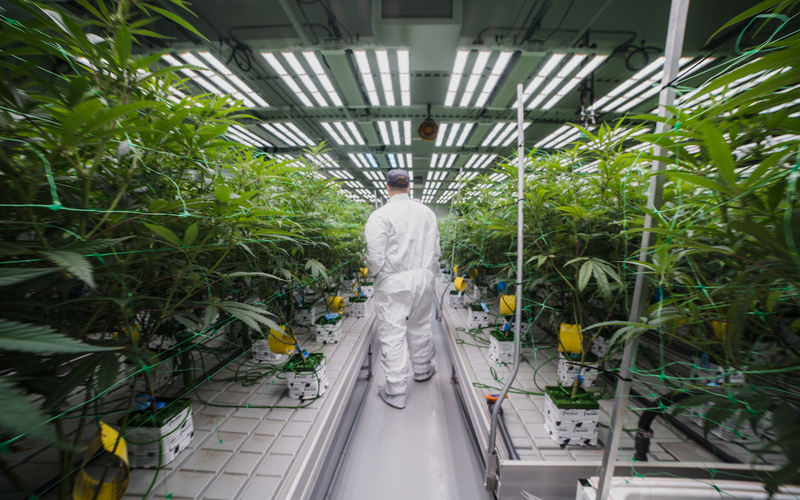What comes to mind when you think of Arizona? Do you envision the sprawling Grand Canyon in all its majesty?
Maybe you think of turquoise gemstones or saguaro cacti. Beyond Arizona’s Hoover Dam and 113,000 square miles of unique geology is a thriving tech center that is embracing cannabis faster than any other state in the nation.
Since legalizing adult-use cannabis sales in January 2021, Arizona has already earned nearly $1 billion in cannabis revenue. Jobs are opening up rapidly to meet demand.
Employment company Vangst reported the Grand Canyon state will create 25,000 cannabis jobs over the next five years. Since 2017, positions in the cannabis sector have increased from 120,000 to over 320,000 in the first quarter of 2021.
What’s so alluring about this southwestern state? Companies might be drawn to its low corporate tax structure (just 4.9%), or its robust workforce of more than 3 million people with a median age of 37.
Arizona also has some of the lowest labor costs in the country, according to the Arizona Department of Agriculture. The state boasts 80+ airports and more than 66,000 miles of highway — a great pairing for importing and exporting goods.
While Arizona may seem too dry for agriculture (it’s home to four deserts), it has plenty of rivers and streams to support farming. Its warm climate allows for year round production of many crops. The Arizona agricultural sector exports vegetables, nuts, fruits, wheat, cotton, eggs, beef, and milk to more than 70 countries across the globe.
Since legalizing medical marijuana in 2010, the state has been evolving its understanding of the plant and, in many ways, preparing for its recent legalization of adult-use sales.
Now that the market is open, there’s no end in sight for this robust cannabis marketplace. Let’s explore some of the people and companies making the Grand Canyon State a thriving cannabis tech zone.
Safer Sanitation
In November 2021, several Arizona cannabis companies recalled products due to Salmonella or Aspergillus contamination. Recalls cost cannabis companies time, money, and reputational harm. A similar situation in Michigan impacted more than $200 million worth of cannabis product, reported the Detroit Free Press. Often these recalls could be avoided with proper cleaning protocols.
Bill Frazier, National Sales Director for Clean Control Corporation (CCC) said the cannabis industry needs consistent cleaning practices to avoid contaminating products with mold and bacteria. “Our company is addressing the need for cannabis-specific standard operating procedures, whether it’s a cultivator grow house, transportation, processing facility, or dispensary.”
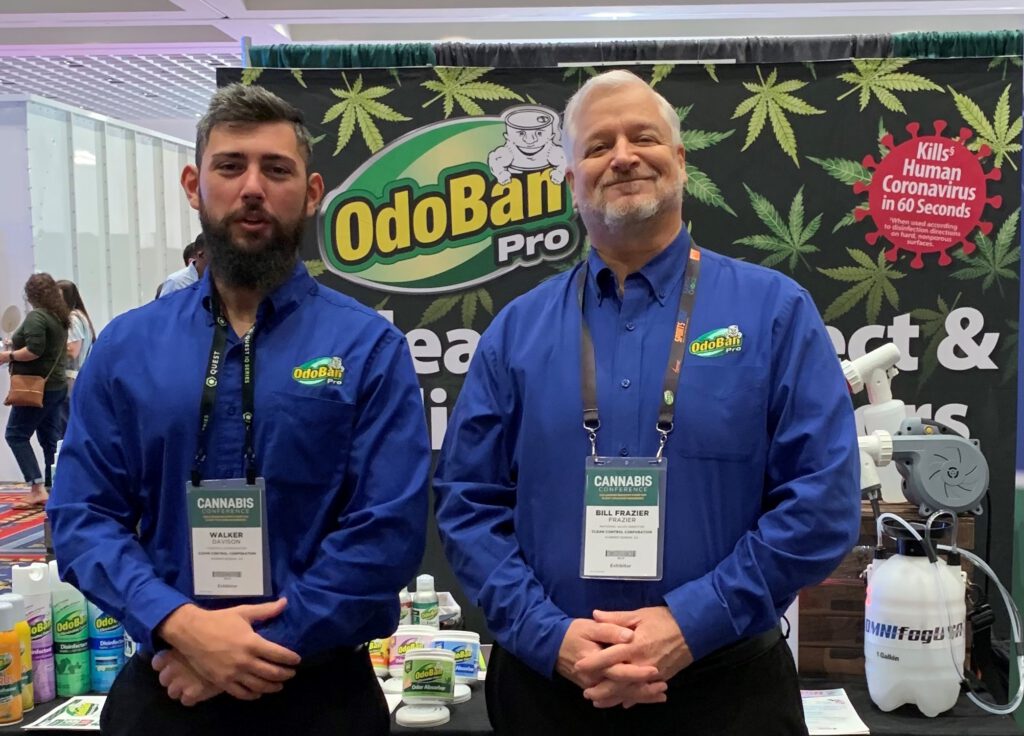
CCC is offering these SOPs at no cost on its website. The company’s technology, a bleach alternative called OdoBan® Disinfectant and Odor Eliminator, is safe for use in grow facilities, kills 99.99% of bacteria (including COVID-19), and costs .35-.50 cents per gallon depending on dilution.
For Arizona operators, there are some regulations around cleanliness and sanitation. For instance, all trucks, trays, buckets, receptacles, as well as machinery, saws, cleavers, etc., must be cleaned each day. But Frazier said those requirements aren’t enough. “Cleaning rooms when moving plants and enacting common cleaning procedures like OdoBan shoe-baths can help reduce contaminants significantly.”
These sanitation regulations are especially important for edibles. The founder of the Arizona-based Foundation of Cannabis Unified Standards, Lezli Engelking, said cannabis is a unique industry with unusual risks.
“Food safety regulations are critical to protecting the safety of patients, consumers, workers, and the public from unsafe processes and products,” Engelking said in an interview with Food Safety Magazine.
“Yet, among the states that have legalized either medical and/or adult-use cannabis, very few measures have been implemented directly involving food safety.”
Engelking also warned that traditional solvents and cleaners are often not effective against the resins from cannabis extracts. Cannabis-specific cleaners, while limited, are designed specifically to combat this issue.
As the industry evolves, regulations around sanitation will only become more strict. Cannabis companies need to enact forward-thinking policies, so they’re prepared as new regulations are released.
Frazier said his own near-death experience and subsequent use of medical cannabis drew him to the industry. He is now committed to making cleaning, disinfecting, and odor elimination a priority for the entire cannabis industry.
“We quickly saw the need for cleaning information and advice. We are offering 40+ years of cleaning, disinfection, and odor elimination experience to the cannabis industry. Our cannabis cleaning SOPs are available to anyone, free of charge,” Frazier said.
In addition to innovative cleaning products, operators will increasingly rely on technology to keep their processes hygienic.
“To assist in meeting these food safety requirements, we will see operators begin to rely more on automated technology related to environmental monitoring and surveillance to assure sanitary practices are effective and being followed,” Engelking said.
If cannabis companies are going to avoid massive recalls and product loss while building consumer confidence, it will take more than advances in technology. Companies will have to create their own policies to deal with internal safety, sanitation, and cleanliness.
Arizona’s Cannabis Vape Market Heats Up
Vaping technology has come a long way since Hon Lik developed the first commercially successful electronic cigarette in 2003. Vapers can customize their devices and purchase a huge variety of cartridges, from pre-filled and flavored to refillable or even artificially intelligent pods that report user data to an app.
As Arizona residents develop a taste for vapes, manufacturers will have to find ways to keep up. It’s a sector that’s growing quickly.
Data-analytics firm Headset reported a 20% increase in recreational vapor pen sales from 2019 to 2020 in California, Colorado, Nevada, Oregon, and Washington state. Credence Engineering President Jim Ellis said he has expanded his inventory to meet the demand from Arizonans and the larger cannabis marketplace.
“Our dispensing pump is the most accurate in the industry and our filling systems have the shortest path from vessel-to-cart,” Ellis said. His equipment is also set up to switch rapidly between different oils.
“Changeover from one lot to the next is the quickest in the industry at under three minutes,” Ellis said.

The global cannabis vaporizer market is expected to expand by 3.5 times its current size by 2031, according to Fact Market Reports.
Brands will need to find high-volume processors who can keep up with large orders. Ellis told Cannabis & Tech Today Credence already offers higher volume solutions for its most assertive clients. “We are offering several throughput levels, from 1,000 per hour up to 18,000 per hour.”
Vape users often prefer the discretion of vaping, which produces less “smoke” and odor than other forms of combustion.
With Arizona’s social scene picking up again since the pandemic, it’s a good atmosphere for vapes. Data analytics company Zenreach found foot traffic to Arizona bars and nightclubs has increased 33% since January 2021.
It’s also a popular method of consumption among college students. A 2019 study from Monitoring the Future found 14% of college students had vaped cannabis in the last 30 days, along with 17% of their non-college-attending peers.
The state is home to 48 colleges and universities and nearly 700,000 students — a prime demographic for vape sales.
As retailers work to meet the demand, it will be brand variety that gives dispensary owners an edge. Lilach Mazor Power, founder and managing director of the Giving Tree dispensary told Phoenix New Times the shop is working to expand its retail footprint.
“Our way to expand and grow is through brands,” Power said.
There are 123 active dispensaries in Arizona, according to the Cannabiz Media license database. With so many retailers looking for products, brands need ample inventory and established manufacturing relationships to out-supply their competition.
Ellis also advises brands look for partners with exceptional customer service. “At Credence Engineering we are continually developing new features, so we give free upgrades to Credence owners. We provide loaner machines in the event that a customer runs into problems and needs the seamless throughput.”
In Arizona’s competitive climate, reliable partners and strong contingency plans could be the difference between profit and loss.
Home Grow Laws Open the Door for Hobbyists
What would convince you to grow your cannabis at home? Research from New Frontier Data (NFD) found that of the 6% of cannabis consumers who grow at home, 32% grow to avoid pesticides.
Nearly half (52%) do it for convenience and 46% grow at home because it’s cheaper than purchasing retail. With the passage of Proposition 207, Arizonans 21 and older can legally grow up to six plants at a time, or up to twelve if there’s another adult in the residence.
It’s an exciting time to be a home grower. For decades cannabis cultivation has been a whisper told in secret only to the closest of friends.
Now, growers can discuss their techniques openly in public forums, on the internet, and in person at one of the many cannabis expos held across the country. Arizona’s new laws allow home growers to plant crops in an enclosed area of their property. As long as it’s locked away from minors and invisible to public view, it’s good to grow.
Often the biggest hurdle to starting one’s own grow is, well … starting it. Finding seeds can be a challenge in a new market like Arizona. Some dispensaries offer clones or seeds for public sale. Several websites will ship directly to customers.
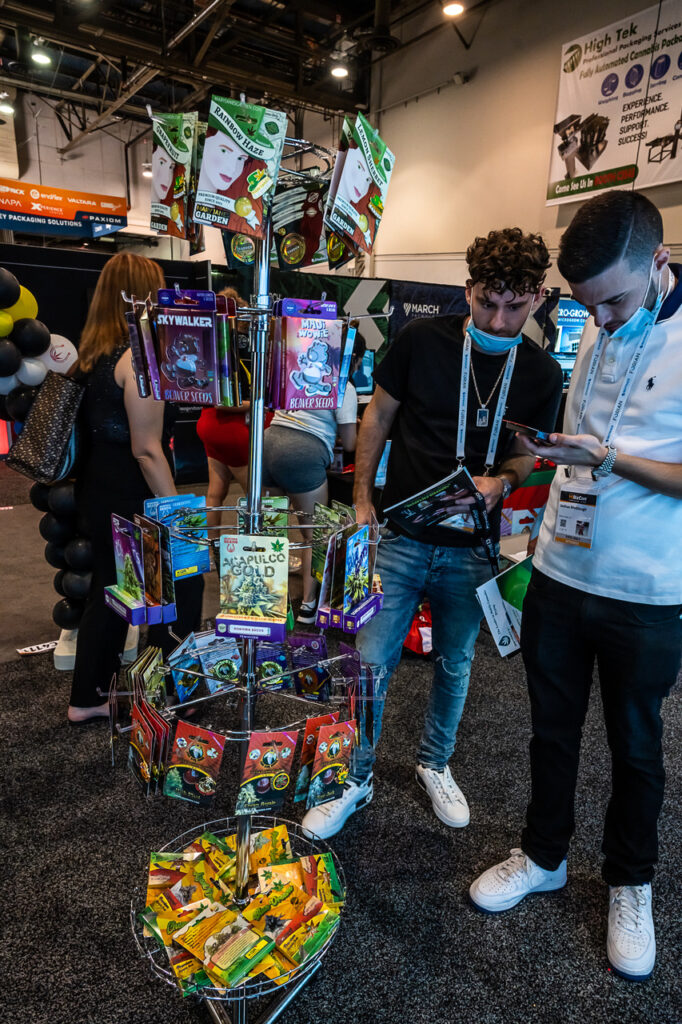
Landra De Loach, CEO of Rocket Seeds said she hopes to encourage home growers while supporting the cannabis industry. “Our goal is to support small breeders and farms across the globe,” De Loach said.
“We are helping set a standard for small home grower needs while working to make sure the privilege of growing at home is not taken away.”
Many home growers are using the plant medicinally and require specific strains or varieties to treat their ailments. One difficulty when growing from seed is tracing the genetic lineage. To combat this issue, Rocket Seeds partners with Seed Tracker Technology to offer personalized QR codes to breeders.
The result is a scannable packet that allows customers to see the lineage of the seed as well as the planting and harvesting dates. These QR codes also detail when the seeds were packaged and offer growing advice from breeders.
With a reliable source of seeds, home growers can get started on their cultivation journey. The first few grows are always a bit tricky, but thanks to widespread legalization there are many resources to help the novice grower.
Noah Wylie, master grower at The Mint Dispensary in the East Valley told the Arizona Republic home growers should take it slow.
“I warn people … crawl before you walk. Learn to get your plant to grow all the way to fruition, harvest it, dry it, cure it,” Wylie said. “Then you can build from there. Don’t run out and buy thousands of dollars of equipment.”
With more information available to the public, more people can take the power of the plant into their own hands.
After all, what’s the number one reason people decide to grow at home? According to NFD, 70% of home growers do it just because it’s fun to have a green thumb. Why not give it a try?
At the very least, you know you’ll enjoy the fruits of your labor.
Arizona Cannabis Labs Step Up To Meet Unprecedented Demand
Does ibuprofen undergo testing for heavy metals? How much pesticide is in your wine? If a product is available for public sale in a regulated market, there’s an assumption that it’s been tested for safety. This is not always true.
When Arizona legalized medical cannabis in 2010, patients were just grateful to have access to medicine. It wasn’t until November 1, 2020 that the state enacted SB 1494, requiring medical and adult-use cannabis be tested for potency and contaminants.
Two days later, recreational cannabis use was passed into law.
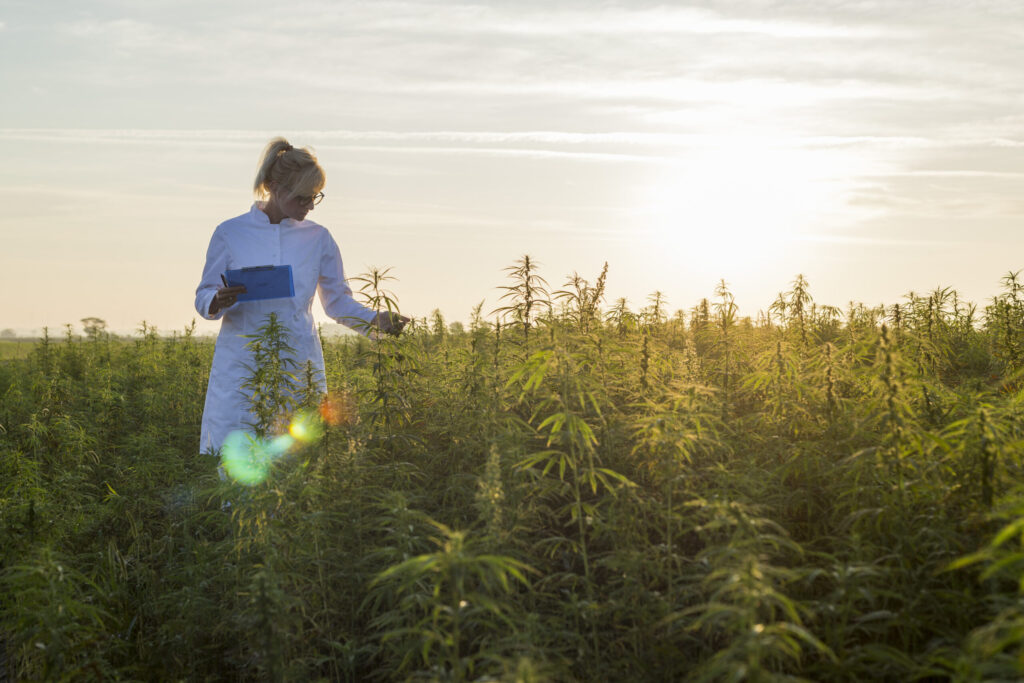
The result was a flurry of activity for cannabis testing labs. Suddenly both recreational and medical products had to be tested for heavy metals, microbials, herbicides, pesticides, and more.
Many labs scrambled to keep up with demand.
Others were able to keep up even as the pandemic delayed shipments and created equipment shortages.
Ethan Sasz, founder and owner of Plant Safe Powered by Paradigm said his clients were grateful for his efficiency when labs across the state were backed up.
“We have four times the amount of instrumentation that most labs have today,” Sasz said. “We have the corporate model of a large business, but with a local presence.”
In response to the community’s plea for increased safety during the COVID-19 crisis, Sasz revised Plant Safe’s practices to offer safe, secure transportation and delivery of samples throughout the state.
The demand for testing has since lessened, but retailers are now acutely aware of the value of a collaborative, resilient laboratory partner.
Consumers, as well as retailers, respond to safety testing and prefer brands with a history of transparency.
More than 61% of buyers 18-27 will pay extra for organically grown cannabis, reported Statista. Safety, especially for medical cannabis, is paramount to consumers.
“Safety is a big part of the evolution of the cannabis industry and other biological businesses. As a clinical lab first, we had to provide empirical results for patient safety. We are bringing that same ideology into the cannabis space,” Sasz said.
As the Arizona marketplace grows, so will expectations around testing and transparency.
The Grand Canyon State is already proving to be one of the fastest-growing cannabis markets in the country.
At the time of this writing, Arizona is set to pass a billion dollars in sales in its first year of recreational sales.
Demitri Downing, CEO and founder of Arizona Cannabis Industry Trade Association, told Channel 12 News he hopes to see the state play a pivotal role once cannabis becomes federally legal.
“We want to set up an export state. We want to set up a state where we are manufacturing as many products as possible, cultivating as much product as possible,” Downing said.
When that day comes, nationwide safety regulations will certainly follow. Cannabis testing laboratories are scaling up in preparation.
With a fleet of vehicles trained to pick up samples, plus proprietary testing and certification software, Plant Safe is looking to the future. “We strive to be the gold standard and set the benchmark for other labs in the state,” Sasz said.
Retaining Talent in Arizona’s Competitive Cannabis Marketplace
“The United States now has more legal cannabis workers than dentists, paramedics, or electrical engineers,” said NewLeaf Captive CEO Philip Burghardt.
“It’s on track to outpace manufacturing’s 525,000 workers by 2025.” If those numbers surprise you, you haven’t been watching the explosive growth of Arizona’s cannabis sector.
In just one year, the state’s industry has outpaced some of the nation’s established legacy markets. Burghardt feels the largest increase in Arizona’s tech sector in 2022 will be in the labor market.
He created NewLeaf Captive, a group health insurance provider, to serve the cannabis industry’s growing workforce.
“I understand the challenges this industry faces day in and day out, including the demand for quality employees and the ability to retain those employees,” Burghardt said.
Finding insurance through a cannabis company has been nearly impossible since the legal industry began.

Now, with 39 states offering some form of legal cannabis, it’s high time industry employers started offering insurance.
“Conflicting state and federal laws, emerging standardization of business practices, and rapidly evolving regulations have largely discouraged insurers from participating in this market,” said the National Association of Insurance Commissioners (NAIC) in a statement on cannabis and insurance.
Cannabis is still an illegal substance under the Controlled Substances Act and the threat of federal prosecution has largely kept insurance companies out of the cannabis space.
A 2020 report from New Dawn Risk reported there were only six insurers offering cannabis coverage in the U.S.
Dispensaries and ancillary cannabis companies employ nearly 21,000 people in Arizona.
Leafly ranked it as number four in the nation for cannabis jobs. How are all these people protecting themselves and their families from unexpected medical payments?
It’s largely up to the individual to secure private health insurance.
“In all other industries, a large percentage of workers will elect a lower paying job with a better benefit package vs. a high paying job with little to no benefits offered,” Burghardt said.
With more than a hundred dispensaries and dozens of ancillary companies operating, that’s a lot of competition for talented employees — and a lot of uninsured workers.
“To attract and retain these skilled employees, which companies have invested time and money in, these employers will need to offer group health insurance to compete,” Burghardt said.
While many employers might be happy to offer insurance, paying large premiums while establishing a company in a new market could be expensive and risky. That’s one reason why NewLeaf is offering operators a portion of their cash back for unused coverage.
Despite the reluctance of the federal government to embrace the legalized industry, there are some positive pieces of legislation on the horizon.
The Clarifying Law Around Insurance of Marijuana (CLAIM) Act would expand coverage options for businesses and remove federal barriers for insurers to work with legal cannabis-related businesses.
Until then, there are still insurance options available to cannabis businesses. “Choose a provider that empowers members to navigate the healthcare system while leveraging the convenience of modern technology. This puts members in control of their healthcare experience,” Burghardt said.
Innovations in LED Technology Ideal for Arizona’s Arid Climate
For many growers, cannabis is an indoor crop. While energy intensive, indoor cultivation offers more consistent yield and appearance.
But in hot, arid environments like Arizona, is there a solution for keeping indoor temperatures down while keeping quality high?
Cannabis & Tech Today spoke with Brett Stevens, CEO of Fohse Inc., to learn how Arizona growers can utilize LED lighting to lower temperatures and optimize yields.
Cannabis & Tech Today: Why has the cannabis industry been slow to adopt LEDs?
Brett Stevens: The LED manufacturers who had been in the agricultural industry for a long time didn’t take it upon themselves to innovate for cannabis specifically.
The problem was that these LEDs were maxing out between like 630-800 Watts, and not a lot of photons. So, early adopters said, “Well, yeah, I definitely saved on all my energy bills, and I produced light more efficiently per watt, but my yields went down.”
No cannabis producer out there is in the business of saving electricity. They’re in the business of growing and selling weed. And if they could save electricity along the way — great. So that was the uphill battle that LED had to face.
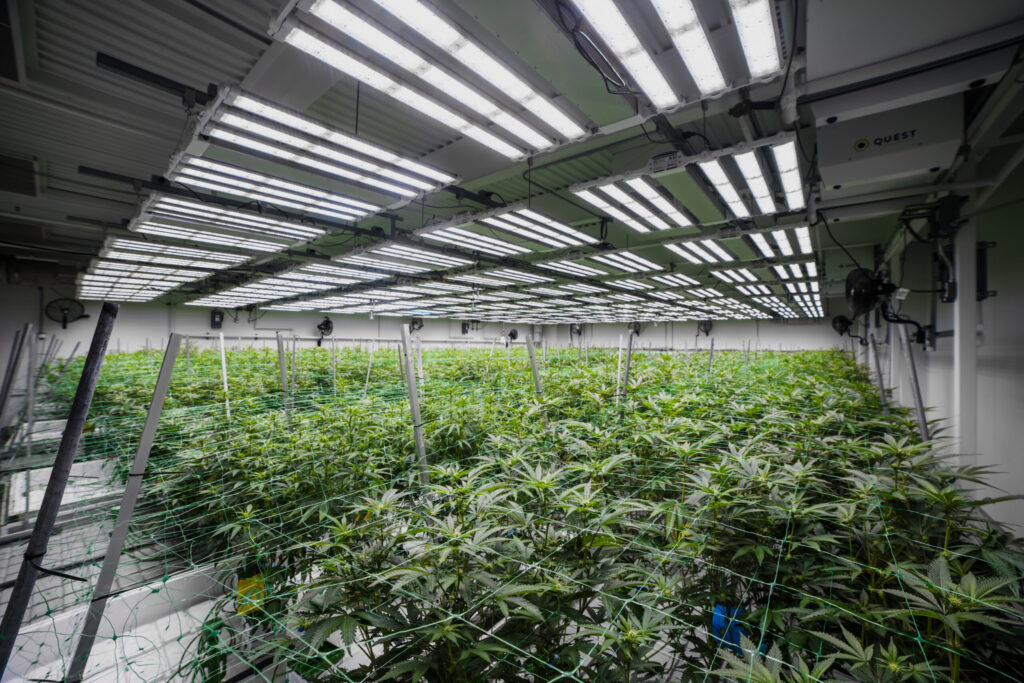
Now, what Fohse can offer the industry is our flagship model, the A3I 1500-watt LED. There’s nothing else like it in the market.
By putting out that much power, growers can finally reach the upper thresholds of what cannabis is capable of with some of the highest photosynthetic photon efficacy figures in the market.
C&T Today: What are the advantages to growing with LEDs in a desert environment?
BS: When we were first exploring opportunities in the cannabis space, one of the local facilities where we were working had a problem.
They were using 1000W DE HPS fixtures. Many operators switch to night cycles in the desert as their A/C systems have to work a little bit less running at night than they do during the day.
One evening when nobody was there, the air conditioning lines froze over and stopped working. Cooked the entire crop. Destroyed everything. And of course, there’s no insurance.
So, especially in the desert, you need to have a lighting solution that works with the environment.
And when you’re working with high-intensity LEDs like Fohse, we’ve engineered and patented thermal management systems in our fixtures so that you don’t need to rely as much on air conditioning to keep the room cool.
C&T Today: How does LED lighting help manage the temperature of a grow facility?
BS: All but one of Fohse’s models uses 100% passive cooling, so no fans in the fixture itself, which just increases the efficiency.
For example, we’ve worked over 16,000 square inches of aircraft-grade aluminum surface area into our A3i model, which effectively takes all the heat generated by the diodes and dissipates it.
Plus, when the plants are growing a lot faster under high-intensity LEDs, they’re putting a lot more moisture into the environment, which allows a cultivator to take advantage of the effects of evaporative cooling.
That’s really what’s ideal about deploying LED technology in the Arizona space.
Author
-
Ebby Stone is a freelance writer specializing in cannabis, with a focus on the innovators and businesses shaping the industry.


